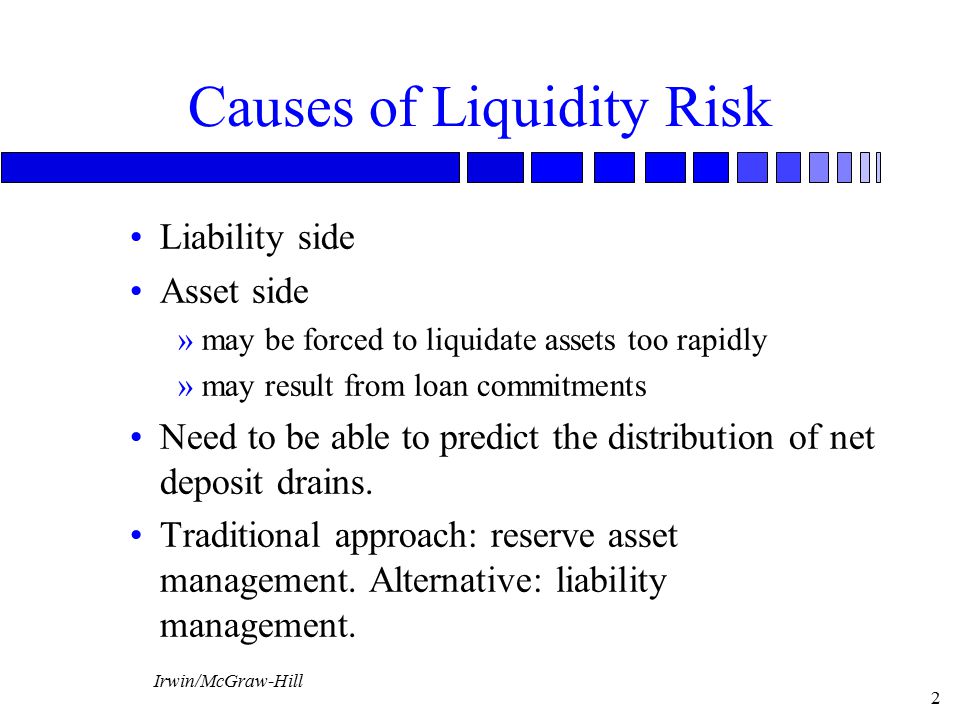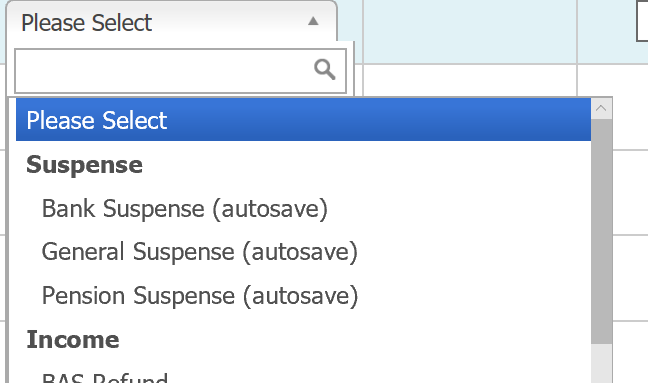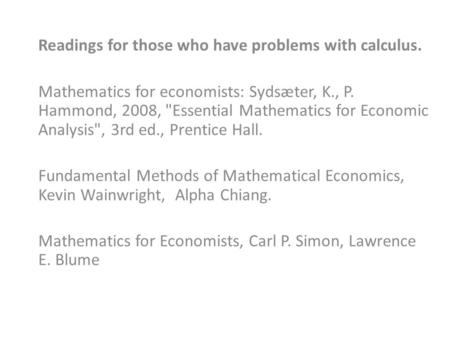
Modified duration (MD) is a measure of a bond’s price sensitivity to interest rate changes. It is calculated as the percentage change in a bond’s price for a given percentage change in interest rates. For example, if a bond’s price decreases by 1% when interest rates increase by 1%, then the bond’s modified duration is modified duration meaning 1%. For a standard bond, the Macaulay duration will be between 0 and the maturity of the bond. The “Total” row of the table tells an investor that this three-year bond has a Macaulay duration of 2.684 years. Traders know that, the longer the duration is, the more sensitive the bond will be to changes in interest rates.
Duration measures the sensitivity of a security to the movement in the interest rates and can be used in planning the investments of a portfolio of securities. Duration has several variants such as Macaulay duration, modified duration and Effective duration, each having its own usefulness. In spite of it being a popular metric, it is flawed as it doesn’t incorporate the convexity of the relationship of price and yield and therefore is only an approximate measure. This is because more frequent coupon payments reduce the effective duration of a bond, as the bondholder receives more cash flows in the near term.

Typically, a higher YTM shows that the debt fund scheme is invested in low-quality bonds carrying high returns but also a high level of risk as compared to lower YTM funds. For example, to calculate the Macaulay duration of a single bond in the debt fund, a few key elements are required. If you have been investing in fixed-income investment schemes such as term deposits and are now looking for consistent returns with low volatility, debt mutual funds are perfect for you. While modified duration has numerous applications in risk management, bond portfolio strategies, and performance evaluation, it also has its limitations. Investors can also use modified duration to calculate how much interest they will earn on a bond if interest rates move by a certain amount. For example, if a bond has a modified duration of 5, and interest rates move up by 1%, the bond’s yield will increase by 5%.
Example of Macaulay Duration
Modified duration assumes a linear relationship between bond prices and yields, which is only sometimes accurate due to the convex nature of the bond price-yield curve. Modified duration and DV01 as measures of interest rate sensitivity are also useful because they can be applied to instruments and securities with varying or contingent cash flows, such as options. Formally, modified duration is a semi-elasticity, the percent change in price for a unit change in yield, rather than an elasticity, which is a percentage change in output for a percentage change in input. Modified duration is a rate of change, the percent change in price per change in yield. In terms of standard bonds (for which cash flows are fixed and positive), this means the Macaulay duration will equal the bond maturity only for a zero-coupon bond.
In general parlance, the term duration refers to a time frame, but when it is used in the context of bonds, it means something more. Bond duration is a measure of how sharply the price of a bond will change in response to changes in interest rates. A higher bond duration means a greater level of interest rate risk, and knowing that can help investors decide whether a particular bond is a good investment. The bondholder or investor receives the principal and interest in full at the end of the term. Since debt funds invest in a variety of debt instruments, it can be difficult to determine the maturity of each security.
- For bond funds, the average duration of all the bonds in the fund conveys to investors how sensitive the fund will be to changes in interest rates.
- Sometimes we can be misled into thinking that it measures which part of the yield curve the instrument is sensitive to.
- Since there are no coupon payments, the duration of zero-coupon bonds is equal to their time to maturity.
- How a bond’s price responds to changes in interest rates is measured by its duration, and can help investors understand the implications for a bond’s price should interest rates change.
The duration of a zero-coupon bond equals its time to maturity since it pays no coupon. First, as maturity increases, duration increases and the bond becomes more volatile. Second, as a bond’s coupon increases, its duration decreases and the bond becomes less volatile. Third, as interest rates increase, duration decreases, and the bond’s sensitivity to further interest rate increases goes down. Whilst we now have an understanding of the concept, let us look at the different types of duration measures. Typically, when interest rates rise, there is a corresponding decline in bond values.
Coupon Rate
When the Federal Reserve cuts interest rates, investors flock to bonds issued at times when rates were higher, raising their prices. Generally, the higher the duration of a bond or a bond fund (meaning the longer you need to wait for the payment of coupons and return of principal), the more its price will drop as interest rates rise. To maximize gains, high-risk investors may consider investing in debt funds with a higher YTM. Low-risk investors can choose funds with lower YTM that invest largely in high-quality bonds with low risk. This is the average time it takes for all securities in the fund to mature. If a debt fund’s average maturity is three years, all securities will mature in three years on average.

This bond has an annual coupon rate (the yield paid through maturity) of 5%. The Macaulay duration is named after economist and mathematician Frederick Macaulay, who developed the concept of bond duration in the 1930s. Calculating the Macaulay duration is the most difficult part of calculating the modified duration of an asset. Below, we’ll explain in more detail exactly what modified duration is, how to calculate it, and provide an example of how to use it. For example, if a company begins to struggle and its credit quality declines, investors will require a greater reward or YTM to own the bonds. The same factors apply if interest rates are rising and competitive bonds are issued with a higher YTM.
Non-fixed cash flows
For large yield changes, convexity can be added to provide a quadratic or second-order approximation. Alternatively, and often more usefully, convexity can be used to measure how the modified duration changes as yields change. Similar risk measures (first and second order) used in the options markets are the delta and gamma.

The BPV will make sense for the interest rate swap (for which modified duration is not defined) as well as the three bonds. Modified duration is important to individual bond investors because it helps them evaluate the impact of interest rate changes on their investments. For example, when interest rates rise, bond prices decline, and vice versa. Investors can calculate the modified duration for the bonds they own to decide whether it’s better to hold or sell, based on the interest rate changes.
Frequency of Coupon Payments
The table below highlights the types of bonds that exhibit each type of convexity. Macaulay duration finds the present value of a bond’s future coupon payments and maturity value. Fortunately for investors, this measure is a standard data point in most bond searching and analysis software tools. Because Macaulay duration is a partial function of the time to maturity, the greater the duration, the greater the interest rate risk or reward for bond prices.
- The yield-price relationship is inverse, and the modified duration provides a very useful measure of the price sensitivity to yields.
- PV01 (present value of an 01) is sometimes used, although PV01 more accurately refers to the value of a one dollar or one basis point annuity.
- The Federal Funds Rate is set by the Federal Reserve, who increases or decreases the rate to respond to changes in the economy.
- A long-duration strategy works well when interest rates are falling, which usually happens during recessions.
- In such cases, considering convexity and effective duration can provide a more accurate assessment of interest rate risk.
Similarly, if the yield is expected to fall by 100bp to 13.92%, then the price would rise by 3.09% to $86.6. With the US Fed, Bank of England and other global central banks raising interest rates, understanding the concept of duration is critical for bond investors and advisors. Duration is a key metric used by professional investors to help manage risk and it forms the building block for any bond investor. In this piece, we cover all essential concepts regarding duration with examples. Investors can view bond duration on the BondEvalue App and use it as a tool to compare bonds that suit their investment objectives. The coupon rate is determined by the bond issuer’s creditworthiness and the time to a bond’s maturity.
For bond funds, the average duration of all the bonds in the fund conveys to investors how sensitive the fund will be to changes in interest rates. Average Effective Maturity (AEM) is the term that describes the average contract length of bonds in a portfolio, so that investors can analyze whether or not that portfolio matches their investment criteria. For example, if an investor is looking to build a retirement fund, he or she should choose bond portfolios with average maturities matching his or herlikely retirement date. AEM is also used by investors to analyze any likely interest rate risk or sensitivity of a debt portfolio. This also helps fund managers to undertake asset allocation or hedging measures to counteract interest rate sensitivity. The yield-price relationship is inverse, and the modified duration provides a very useful measure of the price sensitivity to yields.
This is because for bonds having longer maturities, interest rates might rise during the lifetime of the bond, meaning that the investor could have achieved a higher interest rate. Also, if inflation rises during a bond’s lifetime, if the coupon rate isn’t the same as or higher than the inflation rate, the investor is in essence losing money. In 2021, the inflation rate was 7.5%, so investors holding bonds having coupon rates lower than 7.5% actually lost money.
How Is Modified Duration Useful to Investors?
Unfortunately, as the YTM changes, the rate of change in the price will also increase or decrease. The acceleration of a bond’s price change as interest rates rise and fall is called convexity. To understand modified duration, keep in mind that bond prices are said to have an inverse relationship with interest rates. Therefore, rising interest rates indicate that bond prices are likely to fall, while declining interest rates indicate that bond prices are likely to rise. Modified duration is a formula that expresses the measurable change in the value of a security in response to a change in interest rates.
Cerence Announces Third Quarter Fiscal Year 2023 Results – GlobeNewswire
Cerence Announces Third Quarter Fiscal Year 2023 Results.
Posted: Tue, 08 Aug 2023 11:00:00 GMT [source]
Duration (as in Macaulay’s Duration) gives us an estimate of how much time it takes to recoup the cost/price of the bond before maturity. Since each cash flow from the bond is given a time-weighted importance, the first cashflow helps recoup a portion of the cost of the bond in lesser time than subsequent cashflows. The same applies to the second and later cashflows, that help recoup a portion of the bond’s cost in lesser time than the cashflows that follow them. That is, when interest rates go up, bond prices go down, and when interest rates go down, bond prices go up. The debt fund’s average maturity changes when securities are near maturity or if the fund manager changes the portfolio.
